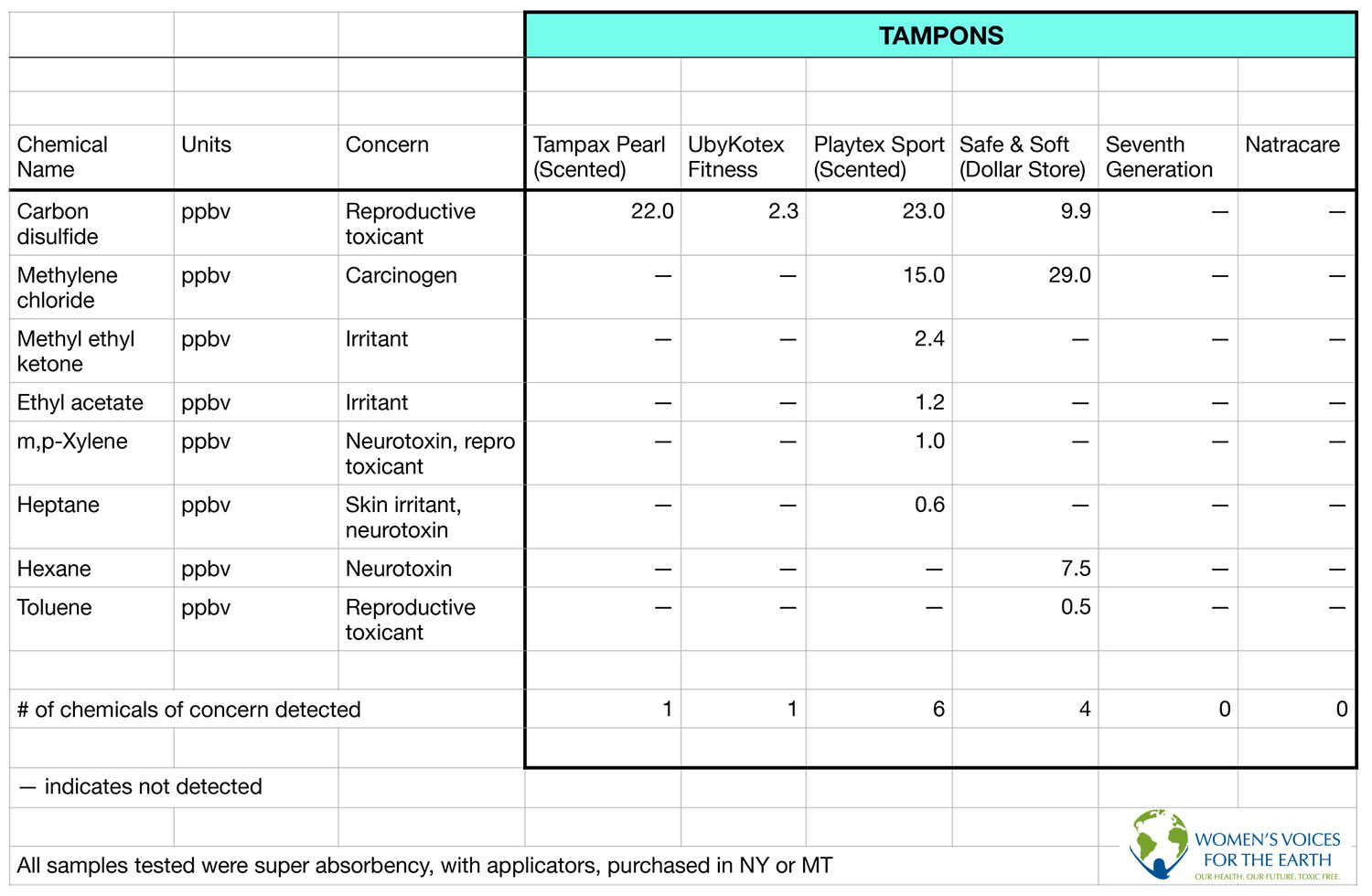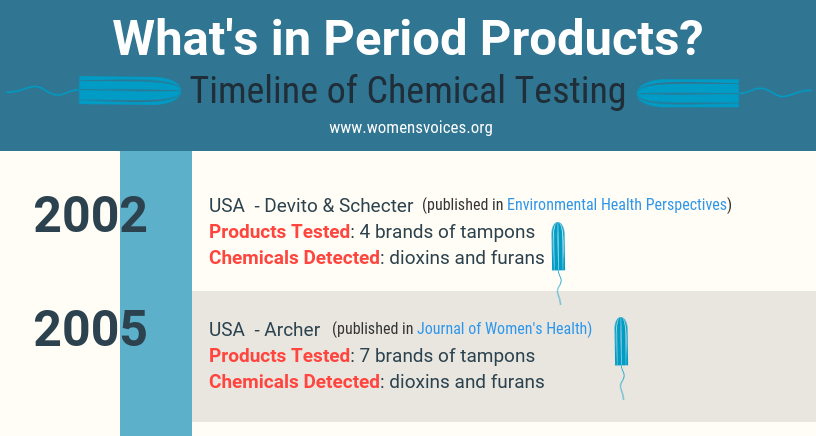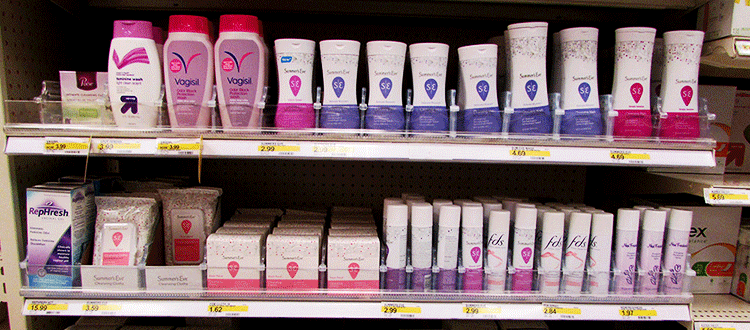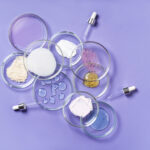2018 Tampon Testing Results
Manufacturers of period products are not currently required by law to disclose ingredients. While some brands are voluntarily disclosing some ingredients in these products, we wanted to know more about the potential chemical exposures that might be coming from tampons.
In April 2018, we sent six popular brands of U.S. tampons to a lab to see what we could find out. We tested for volatile organic compounds – a suite of over 100 toxic air pollutants that can be tested for simultaneously. We discovered that for some brands – there appears to be more complexity (and chemical emissions) than others.
Results of our testing:
What do these results mean?
The results tell us that there may be ingredients (or contaminants associated with ingredients) in tampons leading to exposure to chemicals of concern. It is important to note that there is no available research on potential health impacts from vaginal exposure to these chemicals. These results confirm neither a known level of danger, nor do they establish a threshold of safety for these exposures. What these results do indicate however, is that there is more than we need to know about what tampons are made of and what kinds of chemical exposures they may lead to.
What is carbon disulfide?
Carbon disulfide is the chemical we detected most frequently in our testing. Carbon disulfide is a chemical commonly used in the production of rayon. Our results detected carbon disulfide emissions from all four tampons that contain rayon, but it was not detected in either of the all-cotton tampons. Exposure to carbon disulfide among female workers in rayon manufacturing plants has been associated with increased risk of menstrual disorders, early menopause and hormonal disturbances.[1] Other studies of rayon workers have linked both adverse cardiovascular and neurological impacts with carbon disulfide exposure.[2]
Other toxic chemicals we detected:
We currently do not have an explanation for the presence of the other toxic chemicals (methylene chloride, methyl ethyl ketone, ethyl acetate, m,p-xylene, heptane, hexane, toluene) detected in our testing. These chemicals could be coming from fragrance, another undisclosed additive, or possibly as contaminants of the tampon manufacturing process. More research is needed to better understand the sources and potential impacts of exposures to these chemicals from tampon use.
Testing Methodology:
The testing was conducted by a certified laboratory STAT Analysis Corporation of Chicago, IL, using a standard EPA methodology for determining VOCS (volatile organic compounds) in the air (headspace) surrounding the product (EPA Method TO-15).
To ensure that the levels of chemicals detected were not merely background levels, a control blank of background air was also tested for comparison. Any chemicals detected in the product tests were reported only if they were at levels at least 10 times higher than found in the control blank.
Conclusion:
These results reinforce the need for both better ingredient disclosure and more health research on period products like tampons. It is reasonable to want to know about the presence (or absence) of a reproductive toxin, carcinogen, irritant or allergen in a tampon. Improved ingredient disclosure which could indicate the presence or absence of chemicals of concern would aid in making informed choices of period products. And we need to pass laws that require universal disclosure of ingredients in these products to ensure consistency in labeling. Advances in research on health impacts of period products can help us better understand and prevent the potential impacts of these exposures.
[1] Sieja K, Mach-Szczypinski J and Mach-Szczypinski J (2018) Health effect of chronic exposure to carbon disulfide (CS2) on women employed in viscose industry. Medycyna Pracy. Vol. 69, No. 3. 2018.
[2] Gelbke HP, Goen T, Maurer M and Sulsky S. (2009) A review of health effects of carbon disulfide in viscose industry and a proposal for an occupational exposure limit. Critical Reviews in Toxicology, Vol 39 (S2): 1-126. 2009.










